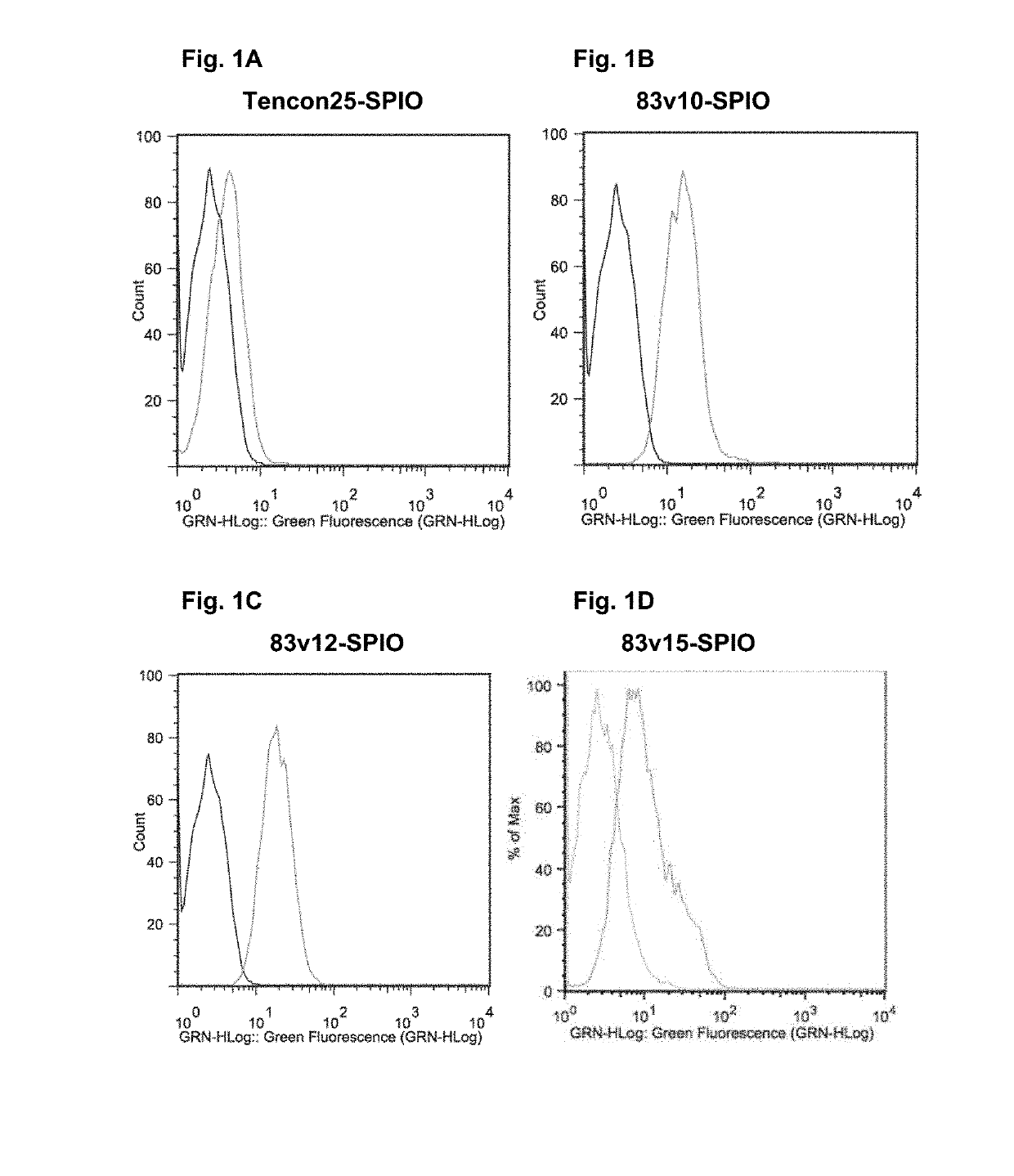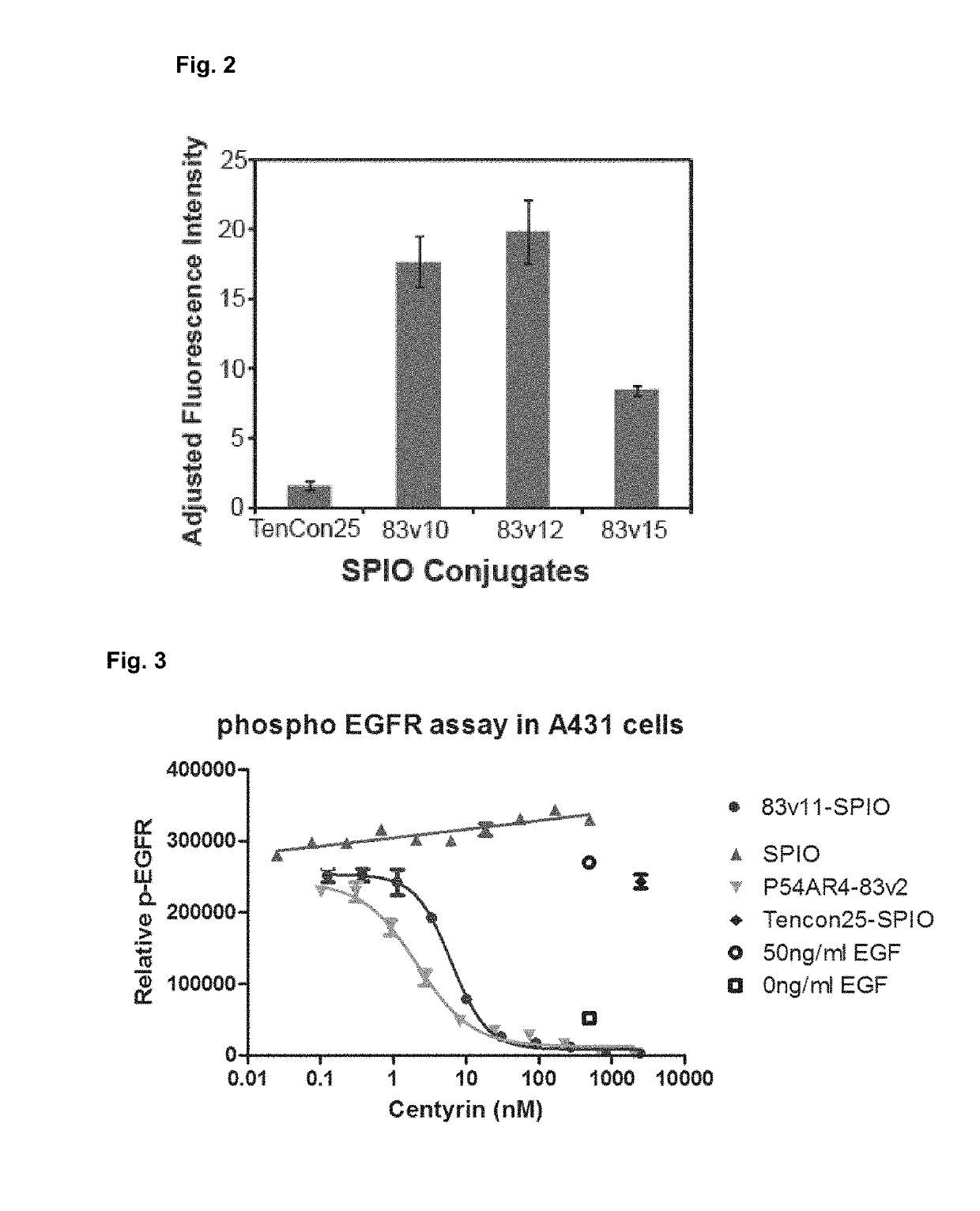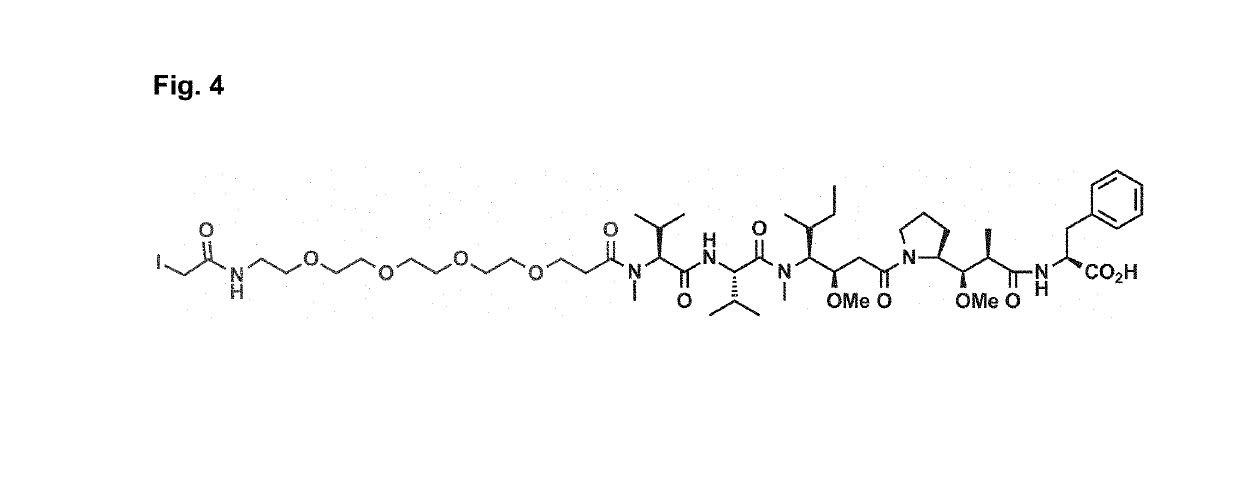Targeting with firbronectin type iii like domain molecules
a targeting technology of firbronectin and like domain molecules, applied in the direction of macromolecular non-active ingredients, drug compositions, immunological disorders, etc., can solve the problems of poor serum stability, difficult vivo delivery of sirna molecules to diseased tissues, and major limitation of therapeutic efficacy
- Summary
- Abstract
- Description
- Claims
- Application Information
AI Technical Summary
Benefits of technology
Problems solved by technology
Method used
Image
Examples
example 1
ion of Tencon Libraries
[0140]Tencon is an immunoglobulin-like scaffold, fibronectin type III (FN3) domain, designed from a consensus sequence of fifteen FN3 domains from human tenascin-C (Jacobs et al., Protein Engineering, Design, and Selection, 25:107-117, 2012). The crystal structure of Tencon shows six surface-exposed loops that connect seven beta-strands. These loops, or selected residues within each loop, can be randomized in order to construct libraries of fibronectin type III (FN3) domains that can be used to select novel molecules that bind to specific targets.
Tencon:(SEQ ID NO: 39)LPAPKNLVVSEVTEDSLRLSWTAPDAAFDSFLIQYQESEKVGEAINLTVPGSERSYDLTGLKPGTEYTVSIYGVKGGHRSNPLSAEFTT:
Construction of TCL1 Library
[0141]A library designed to randomize only the FG loop of Tencon, TCL1, was constructed for use with the cis-display system (Jacobs et al., Protein Engineering, Design, and Selection, 25:107-117, 2012). In this system, a single-strand DNA incorporating sequences for a Tac promoter...
example 2
of Fibronectin Type III (FN3) Domains that Bind a Cellular Target
Library Screening
[0151]Various methods can be used to pan any of the FN3 domain libraries described herein to obtain FN3 domains that bind to a protein or nucleotide of interest for targeting use in the invention. For example, cis-display can be used to select FN3 domains from the TCL1 and TCL2 libraries. A recombinant human protein, possibly fused to an IgG1 Fc, can be used with standard methods for panning.
Selection of Anti-hEGFR FN3 Domain Molecule G3
[0152]Cis-display was used to select EGFR binding FN3 domain molecules as described in U.S. patent application Ser. No. 13 / 852,930. Briefly, recombinant human EGFR-ECD encompassing residues 25-645 fused to the Fc domain of human IgG1 was purchased from R&D Systems and biotinylated for selections. For in vitro transcription and translation (ITT), 2-3 μg of TCL14 DNA was incubated with 0.1 mM complete amino acids, 1×S30 premix components, and 15 μL of S30 extract (Promega...
example 3
ng of FN3 Domains
[0153]The FN3 domains can be engineered to increase the conformational stability of each molecule. The mutations L17A, N46V, and E86I (described in US Pat. Publ. No. 2011 / 0274623) can be incorporated into the molecules by DNA synthesis. Differential scanning calorimetry in PBS can be used to assess the stability of each mutant in order to compare it to that of the corresponding parent molecule.
PUM
| Property | Measurement | Unit |
|---|---|---|
| dissociation constant | aaaaa | aaaaa |
| dissociation constant | aaaaa | aaaaa |
| dissociation constant | aaaaa | aaaaa |
Abstract
Description
Claims
Application Information
 Login to View More
Login to View More - R&D
- Intellectual Property
- Life Sciences
- Materials
- Tech Scout
- Unparalleled Data Quality
- Higher Quality Content
- 60% Fewer Hallucinations
Browse by: Latest US Patents, China's latest patents, Technical Efficacy Thesaurus, Application Domain, Technology Topic, Popular Technical Reports.
© 2025 PatSnap. All rights reserved.Legal|Privacy policy|Modern Slavery Act Transparency Statement|Sitemap|About US| Contact US: help@patsnap.com



